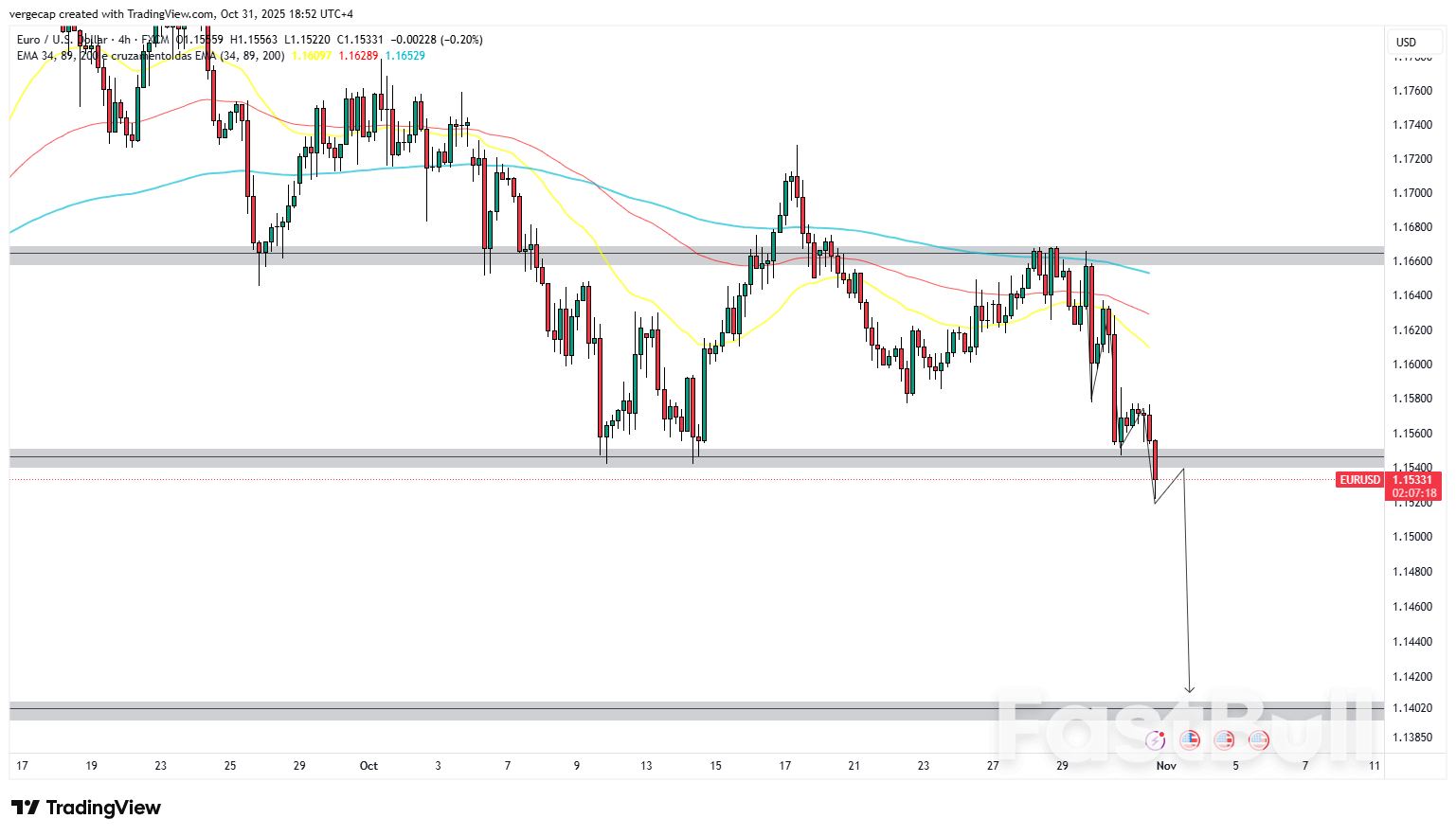The euro weakened against the dollar on Friday, slipping to around 1.1560 as risk sentiment soured and the Federal Reserve’s hawkish policy tone boosted the greenback. The move came after a largely directionless Asian and early European session, where the pair hovered just above key support near 1.1540. Despite a brief attempt to steady, the broader trend remains firmly tilted toward the downside as the market adjusts to diminishing prospects for further U.S. rate cuts this year.
Investors continue to digest Wednesday’s Federal Reserve decision, where the central bank delivered a quarter-point rate cut but paired it with a distinctly hawkish message. Fed Chair Jerome Powell said that another rate reduction at the December meeting was “not a foregone conclusion,” effectively curbing expectations for additional easing. His remarks painted a picture of a central bank intent on staying data-dependent, even as economic visibility remains clouded by disruptions from the U.S. government shutdown, which has delayed key economic releases. The tone reinforced the notion that the Fed is entering a cautious holding phase rather than embarking on a deeper easing cycle.
Markets reacted swiftly. Treasury yields ticked higher, and the dollar rallied as investors interpreted Powell’s stance as a sign of policy restraint rather than further accommodation. The Fed’s message, while signaling flexibility, also underscored its belief that the economy remains relatively resilient. This narrative has provided strong footing for the dollar and left little room for the euro to regain lost ground.
The greenback also found additional support from improving sentiment surrounding global trade. U.S. President Donald Trump and China’s President Xi Jinping reaffirmed a truce in their trade dispute, agreeing to maintain existing terms and suspend further escalation. While the agreement has been described as fragile and temporary, it was sufficient to boost confidence in U.S. assets. The development helped reinforce the dollar’s appeal, given the United States’ perceived economic resilience compared to Europe’s subdued outlook.
In contrast, Eurozone data continued to disappoint. Preliminary October figures for the Harmonized Index of Consumer Prices (HICP) showed inflation slowing slightly to 2.1% year-on-year from 2.2% in September. Core inflation held steady at 2.4%, indicating little underlying price momentum. On a monthly basis, consumer prices rose by 0.2%, marginally above the prior month’s 0.1%, while the core index advanced to 0.3%. These figures suggest inflationary pressures in the bloc remain contained, giving the European Central Bank limited room to maneuver.
The ECB, as expected, left interest rates unchanged at 2% during its latest meeting. President Christine Lagarde maintained a calm tone, stating that the central bank is “in a good place” and signaling confidence that current policy settings remain appropriate. Lagarde’s comments briefly lifted the euro, but the bounce proved short-lived as traders refocused on the widening yield gap between the Eurozone and the United States. Market participants largely interpreted her remarks as confirmation that the ECB is content to maintain its stance for now, rather than hinting at any tightening path ahead.
Technical Analysis
Technically, the euro remains on fragile footing. The 200-day simple moving average continues to act as a ceiling, repeatedly rejecting bullish attempts to push higher. A recent break below the SMA 786 level confirmed renewed bearish momentum, slicing through dynamic support that had previously cushioned declines. The technical setup points to sustained downward bias, with momentum indicators favoring a continuation toward the 1.1400 handle in the short term. The failed attempts to reclaim resistance levels suggest that sellers remain firmly in control, and unless the pair stages a decisive recovery above 1.1620, rallies are likely to be sold into.
The current structure fits well with a disciplined short-side strategy that focuses on precision and patience rather than aggressive chasing. The rejection at the 200 SMA underscores the broader weakness in the euro, while the breakdown through support zones validates the dominance of bearish sentiment. For now, the path of least resistance remains lower, with traders likely to test deeper support levels should the U.S. data continue to outperform or if Eurozone indicators fail to show meaningful improvement.
TRADE RECOMMENDATION
SELL EURUSD
ENTRY PRICE: 1.15350
STOP LOSS: 1.1590
TAKE PROFIT: 1.1400













